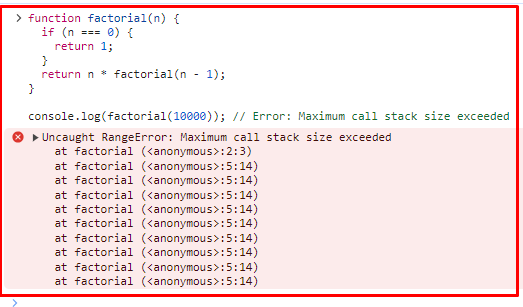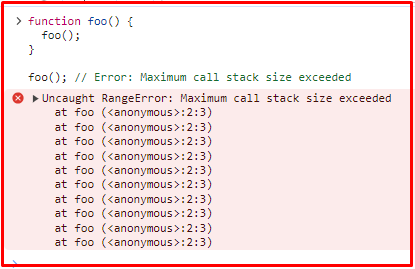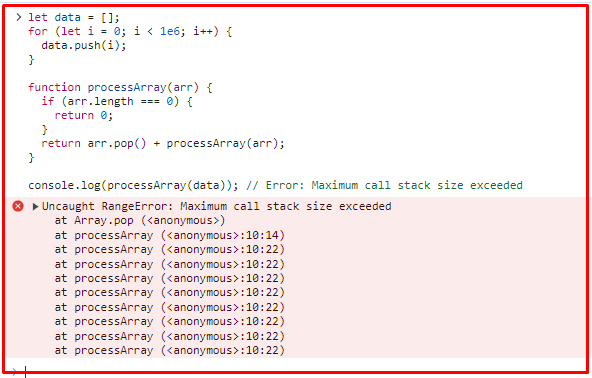In the realm of programming, errors are an inevitable part of the journey, each presenting its unique set of challenges. Among them, the "Uncaught RangeError: Maximum call stack size exceeded" stands out for its enigmatic nature, often leaving developers scratching their heads. However, with a deeper understanding of its origins and implications, this error becomes more approachable. Let's delve into what it means and how to address it, with practical examples.
Understanding the Error
The "Maximum call stack size exceeded" error occurs when a script exhausts the available call stack space provided by the language runtime. This commonly happens in recursive functions or scenarios where there's an excessive number of function calls within a short
Consider a factorial function in JavaScript:
function factorial(n) {
if (n === 0) {
return 1;
}
return n * factorial(n - 1);
}
console.log(factorial(10000)); // Error: Maximum call stack size exceeded

In this example, the factorial function keeps calling itself until n becomes 0, but without a proper termination condition for large values of n, it leads to stack overflow.
function foo() {
foo();
}
foo(); // Error: Maximum call stack size exceeded

The foo function infinitely calls itself, quickly consuming the call stack until it's depleted.
let data = [];
for (let i = 0; i < 1e6; i++) {
data.push(i);
}
function processArray(arr) {
if (arr.length === 0) {
return 0;
}
return arr.pop() + processArray(arr);
}
console.log(processArray(data)); // Error: Maximum call stack size exceeded

In this example, the processArray function recursively processes a large array until it's empty, causing a stack overflow due to the extensive call stack buildup.
As you can see in above examples , the call stack grows until it hits a limit: the browser hardcoded stack size or memory exhaustion.
In order to fix it, ensure that your recursive function has a base case which is able to be met.
(function a(x) {
// The following condition
// is the base case.
if ( ! x) {
return;
}
a(--x);
})(10);
Ensure recursive functions have proper termination conditions. For instance, in the factorial function example, adding a condition like if (n > 10000) return "Number too large"; can prevent stack overflow for excessively large inputs.
Refactor code to minimize unnecessary function calls and optimize performance. For instance, in recursive algorithms, implement memoization to store previously computed results.
Rewrite recursive algorithms as iterative solutions, where feasible, to reduce stack usage. Iterative approaches often consume less stack space and may offer better scalability.
Implement strategies to limit the size of data structures or optimize their representation. For instance, process large arrays in chunks instead of recursively traversing them entirely.
The "Uncaught RangeError: Maximum call stack size exceeded" error poses a significant challenge in programming, often stemming from issues like recursive function flaws, excessive function calls, or large data structure operations. By diagnosing the root causes and employing mitigation strategies like debugging, optimization, and iterative approaches, developers can overcome this error's hurdles, ensuring the robustness and reliability of their code. Through practical examples and diligent problem-solving, the mystery surrounding this error can be unraveled, paving the way for more resilient and efficient software solutions.